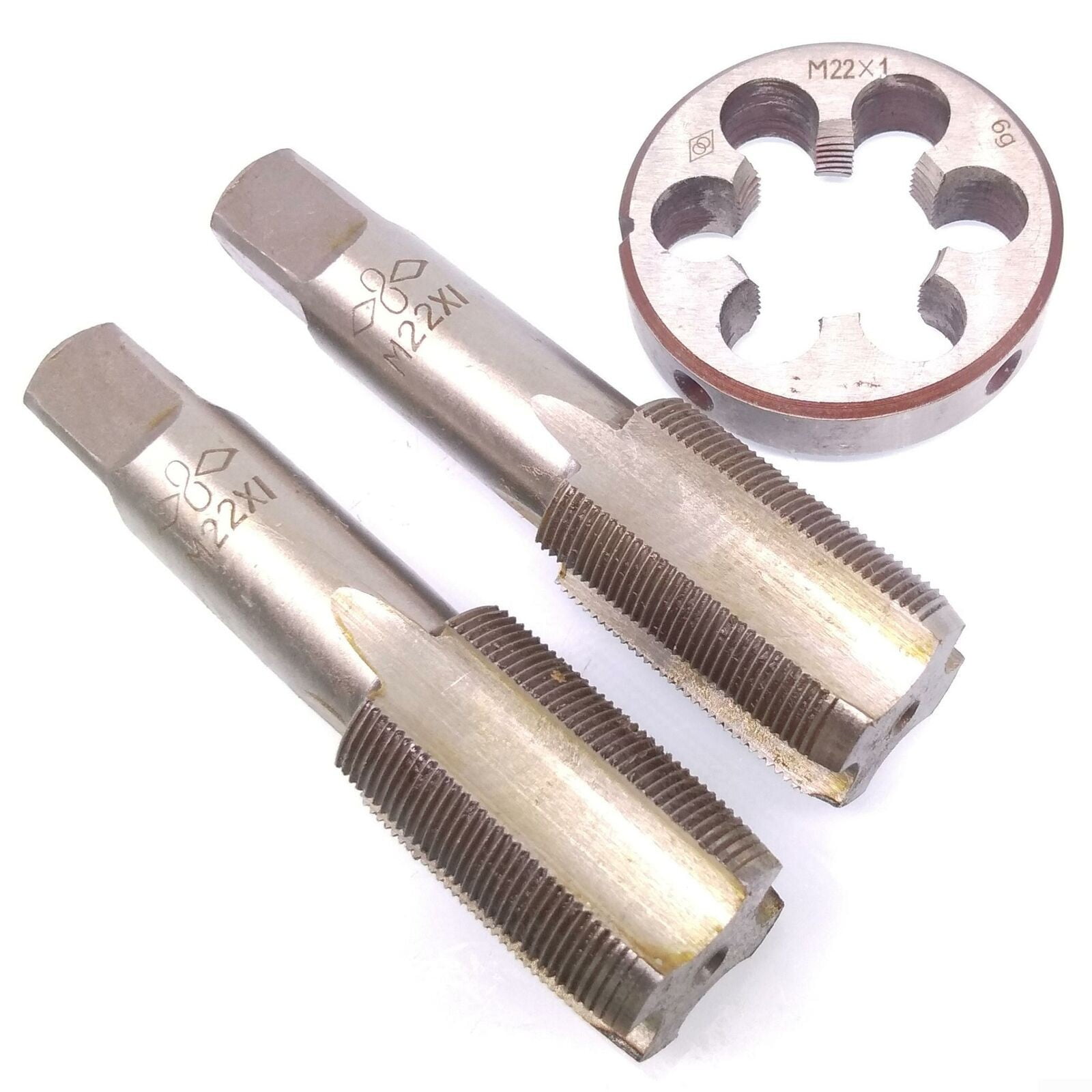

Run the die down some, then back it off to clear the cutting teeth.

Again, use some type of cutting oil to keep things lubricated. While starting to turn, press down on the die until you start to feel the teeth bite into the stock. To start the cut, keep the die perpendicular to your stock. Sometimes it makes it easier to start the cut if you bevel the leading edge using a bench grinder. You'll also want to hold the stock in a bench vise so it will stay still while cutting the threads. You'll want to make sure the stock you are using is small enough for the die to be able to make the initial cuts.
#TAP AND DIE HOW TO#
Run the tap down the distance needed for threads.Ī die is used much the same way as a tap as far as how to cut the threads. As soon as you feel an appreciable amount of resistance, you'll want to back the tap off of it some to allow the cutting teeth to clear the debris, then turn the tap back into the cut. You start to feel the teeth on the tap bite into the metal. You'll want to use copious amounts of cutting fluid (WD-40 works well for this). Place the tap square to the drilled area and carefully begin turning the handle. Take the tap out of the case and insert the square end into the tap handle. This is going to be just a bit smaller than final size of the threaded area you are trying to create. To use a tap, you need to have a starter hole of the appropriate size. The two two long pieces at the top of the set are the handles which allows you to use the tap (top) and die (bottom). The die (round pieces) are used to cut threads on the outside of metal, like for creating threads on bar stock. The tap (long straight pieces) which are used to cut threads on the inside of metal, like in making a bolt hole. There are three basic items to be found in the set. The set will come in SAE or Metric, covering both fine and coarse thread pitches. A typical tap and die set will look something like this: How do I remove a broken drill bit from metal?Ī tap and die set are tools used to cut (ie: create) threads in metal as well as cleaning up already exiting threads. Keep the tap straight and avoid lateral force.Īlso see this question for broken drills. When using a small tap, try to obtain and use a correspondingly small wrench (a 3mm tap with a wrench designed for 12mm is a pretty clumsy combination.)

Tap wrenches are symmetrical to help you avoid applying sideways force on the tap. Make sure you keep the tap straight as you start the cut. Going even 0.1mm smaller because you don't have the right drill is asking for a broken tap, unless you are using aluminium. (Yes this may be a major issue with something like an engine block, but tackling anything more than chasing out existing threads without proper access is unwise.)ĭrill a straight hole in the correct diameter (It's easy to google tables for the correct drill size, and some of them are slightly unusual.) Depending on your application, you may be able to get away with a slightly larger hole diameter. If you are tapping a blind hole, you should also make sure you can invert your work easily to remove chips. Larger taps don't break so easily (though I have managed to break an M12 tap on stainless after it got stuck and refused to move forwards or backwards.) Any decent tap is too hard to drill out, so proceed with caution, as a broken tap can be a real problem. On the other hand, trying to start a thread with the last one is impossible. If you only intend to make through holes, you can get away with the first one. The second will be intermediate between these two in form. The last will have a square end for bottoming out blind holes. The first will be strongly tapered, enabling an easy first cut. Taps, however, are much more of a problem.Ī good set of taps will contain three taps of the same thread diameter/pitch. With the correct die stock, that enables you to spread the die open for an initial cut (hold it using the centre screw in Zaid's image), then start again but close it more for a final cut (hold it using the other two screws in Zaid's image.) A high quality die will be split on one side. Lubricate and back off your work regularly to clear out the chips of metal.ĭies are generally no problem, provided you start with a rod of the correct diameter. The taps less so (see below) so you should expect to buy individual taps periodically. Decide if the hardest material you will cut will be mild steel or stainless steel and buy a decent set accordingly. There are cheap sets out there that will only work on nonferrous metal and will be instantly ruined even by use on mild steel. Make sure the tool you are using is hard enough for the metal you are trying to work.


 0 kommentar(er)
0 kommentar(er)
